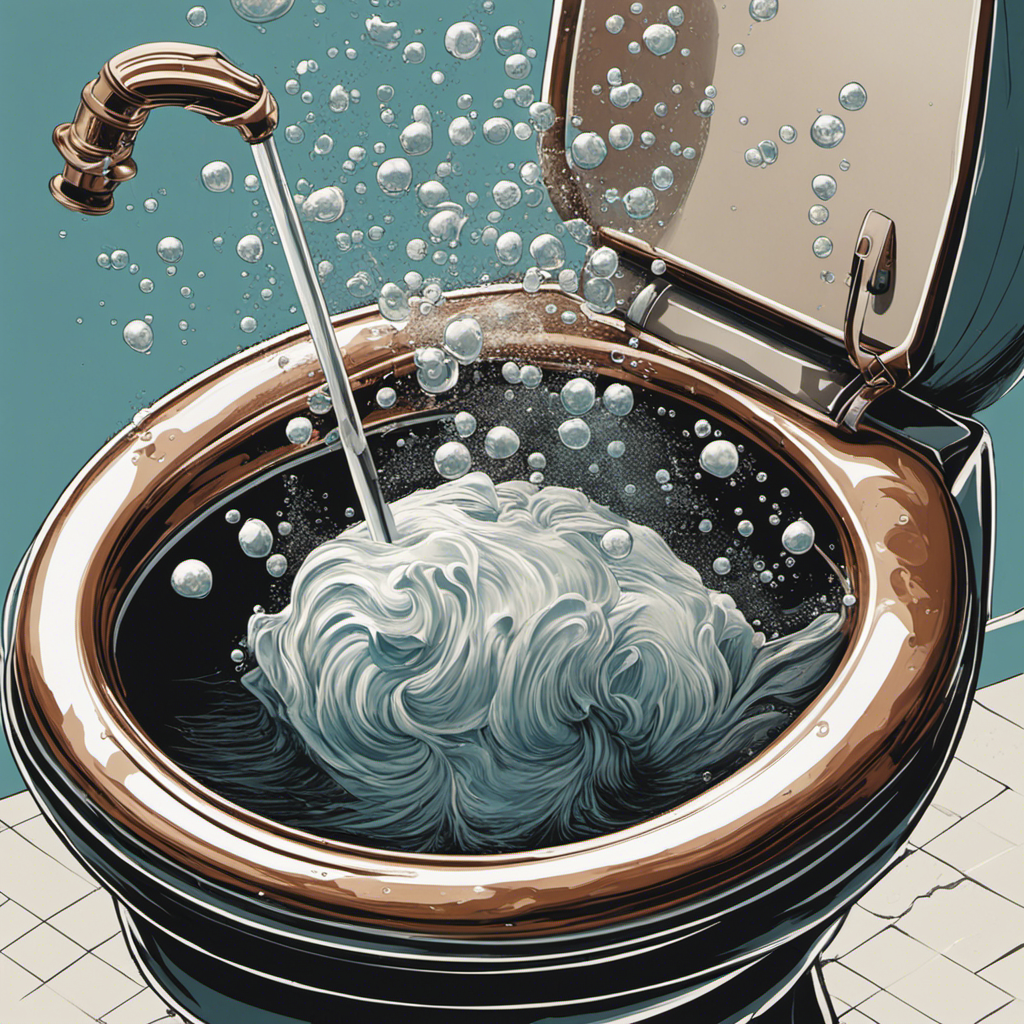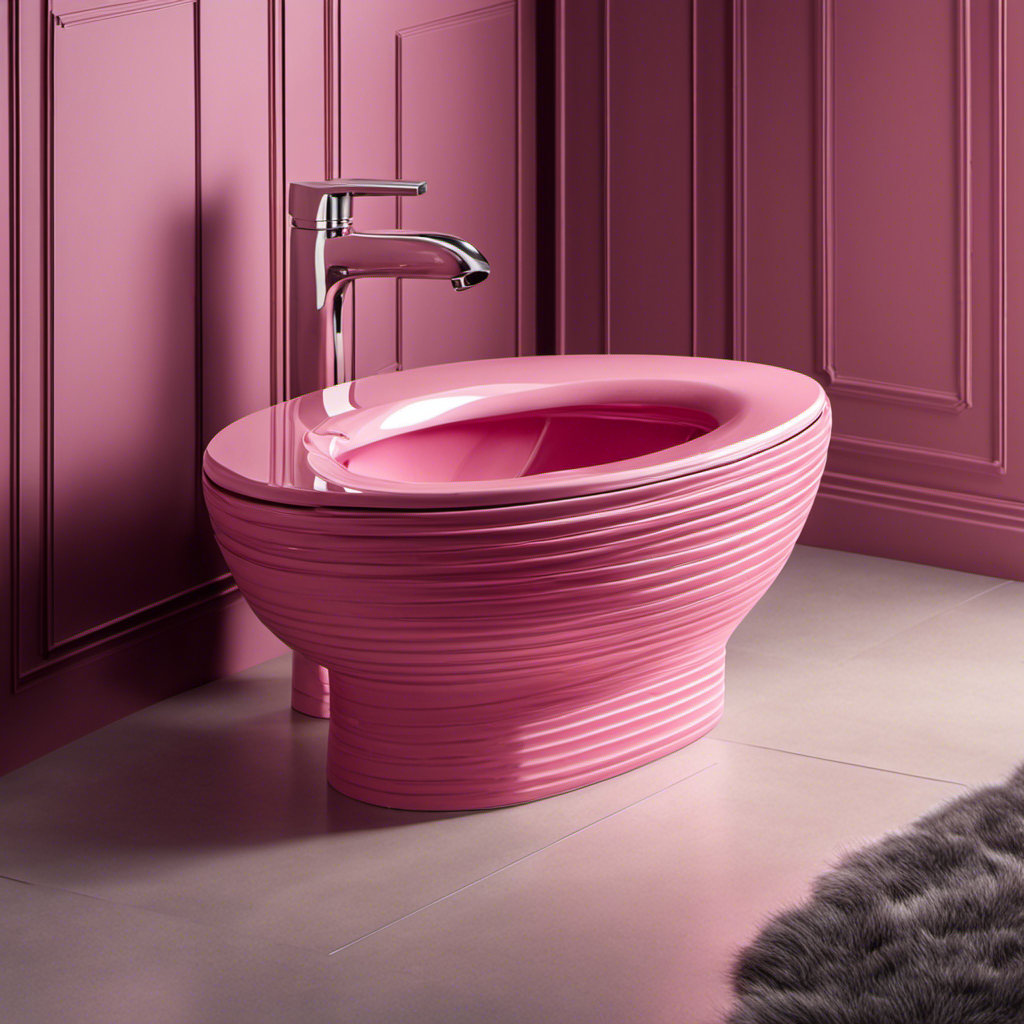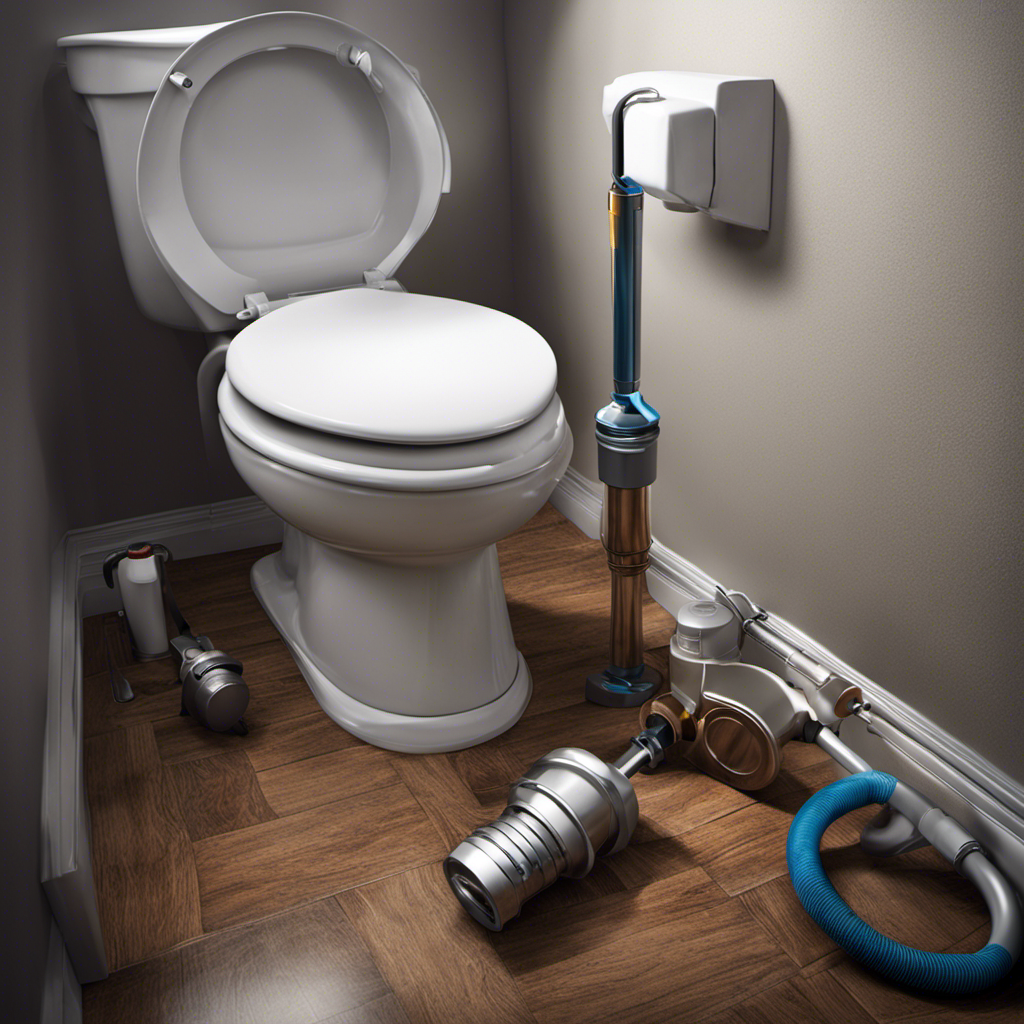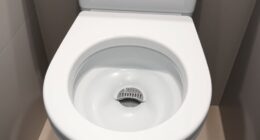Are you in a sticky situation where your porcelain throne is not functioning at its best? Fear not, for we have the answers to your toilet troubles.
When faced with a clogged toilet, there are several tools and methods at your disposal. From the trusty plunger to the mighty toilet auger, we will guide you through the steps to restore your toilet’s functionality.
So roll up your sleeves and let’s dive into the world of toilet unclogging techniques.
Key Takeaways
- The most common tools used to unclog a toilet are a plunger, toilet auger/drain snake, baking soda and vinegar, and hot water and dish soap.
- Causes of toilet clogs include excessive toilet paper usage, flushing non-flushable items, mineral deposits, tree roots in the sewer line, and low-flow toilets.
- Signs of a toilet clog include water rising to the brim when flushed, slow drainage or incomplete flushing, gurgling sounds, foul odors, and water backing up in other fixtures.
- Enzyme-based cleaners are an effective and environmentally friendly option for unclogging toilets, as they break down organic matter causing the clogs and are safe for all types of plumbing systems.
Plunger
You can use a plunger to unclog a toilet. A toilet plunger is a simple yet effective tool designed specifically for clearing toilet clogs. It consists of a rubber suction cup attached to a wooden or plastic handle.
When a toilet clog occurs, the plunger is placed into the toilet bowl, covering the drain hole. Applying downward pressure and then pulling up creates a vacuum effect, pushing and pulling water to dislodge the obstruction causing the clog. The rubber suction cup creates a tight seal around the drain, allowing for maximum suction power.
Toilet Auger
The toilet auger is a useful tool for removing clogs. It is specifically designed to tackle stubborn blockages in the toilet. While a plunger can effectively clear minor clogs, sometimes a more powerful solution is required.
A toilet auger, also known as a closet auger, is a long, flexible cable with a coiled head at one end. This head is inserted into the toilet drain and rotated, allowing it to break up and remove the clog. The auger’s effectiveness lies in its ability to reach deep into the pipe and dislodge the obstruction.
However, if you don’t have a toilet auger or prefer alternatives, you can consider using a drain snake, which we will discuss in the next section.
Drain Snake
A drain snake is a flexible tool that can effectively remove stubborn clogs from your plumbing system. When faced with a clogged drain, many people wonder about drain snake alternatives. However, it is important to note that a drain snake is often the most efficient and reliable option.
The benefits of using a drain snake are numerous. Firstly, its flexibility allows it to navigate through the twists and turns of your pipes, reaching deep into the clog and dislodging it. Secondly, its serrated edges provide extra grip, ensuring that even the toughest clogs are cleared. Lastly, the drain snake is a cost-effective solution, saving you money on expensive plumbing services.
While there are other methods available, a drain snake remains the go-to tool for unclogging drains.
Baking Soda and Vinegar
Mixing baking soda and vinegar creates a powerful solution that can effectively break down clogs in your plumbing system. Baking soda, also known as sodium bicarbonate, has numerous benefits when it comes to unclogging your toilet. It acts as a natural deodorizer, eliminating unpleasant odors that may be present in your bathroom.
Additionally, baking soda has abrasive properties that help to dislodge and dissolve stubborn clogs. Vinegar, on the other hand, is highly effective at breaking down organic matter, such as hair and grease, which are common causes of toilet clogs.
When combined with baking soda, the vinegar reacts and produces carbon dioxide gas, creating a foaming action that helps to clear the clog. This powerful combination of baking soda and vinegar is a safe and eco-friendly alternative to harsh chemical drain cleaners.
Hot Water and Dish Soap
When it comes to unclogging drains, hot water can be highly effective in breaking down and flushing away stubborn clogs. By using hot water, you can help melt away grease, soap scum, and other debris that may be causing the blockage.
Additionally, dish soap can provide added benefits when used in conjunction with hot water, as it can help to further break down grease and grime.
However, if hot water and dish soap do not do the trick, there are alternative unclogging methods that can be explored, such as using a plunger or a drain snake.
Hot Water Effectiveness
To unclog a toilet, you can try using hot water as it can be effective in breaking down the clog. Hot water works by softening and dissolving the blockage, making it easier to flush away. This method is particularly helpful when dealing with toilet bowl stains and discoloration caused by mineral deposits or hard water.
Start by boiling a large pot of water on the stove. Carefully pour the hot water into the toilet bowl, making sure not to overflow it. Allow the hot water to sit for a few minutes to loosen the clog. Then, flush the toilet to see if the clog has cleared. Repeat the process if necessary.
Remember to exercise caution when handling hot water to avoid injury.
Dish Soap Benefits
Now that you understand the effectiveness of hot water in unclogging a toilet, let’s explore another alternative that can be equally as effective: dish soap.
Dish soap, commonly found in most households, can be a natural and readily available solution to unclog your toilet. Dish soap works by breaking down the grease and grime that may be causing the clog.
The soap’s surfactant properties help to reduce the surface tension of water, allowing it to penetrate and loosen the blockage. Additionally, dish soap is non-toxic and environmentally friendly, making it a safe option for unclogging your toilet.
If you don’t have dish soap on hand, there are other natural alternatives you can try. For instance, a mixture of vinegar and baking soda can create a powerful chemical reaction that helps break down the clog. Another option is using a plunger or a plumbing snake to physically remove the obstruction.
Alternative Unclogging Methods
If you’re looking for alternative methods, consider using a plunger or a plumbing snake to physically remove the clog. These are effective toilet unclogging hacks that can help you clear the blockage without resorting to harsh chemicals or calling a plumber.
A plunger creates a strong suction force that dislodges the clog, while a plumbing snake can be inserted into the toilet to break up the obstruction.
Another natural toilet clog remedy is using a mixture of baking soda and vinegar. Simply pour half a cup of baking soda into the toilet bowl, followed by a cup of vinegar. Let the mixture sit for a few minutes, then flush the toilet.
The chemical reaction between the baking soda and vinegar can help dissolve the clog.
Enzyme-Based Cleaner
Enzyme-based cleaners are effective in breaking down organic matter, such as toilet clogs. These cleaners contain specific enzymes that target and break down the proteins, fats, and other organic substances that cause clogs in your toilet. The enzymes work by accelerating the natural decomposition process, making it easier to flush away the clog.
Not only are enzyme-based cleaners effective, but they are also eco-friendly alternatives to harsh chemical cleaners. These cleaners are biodegradable and do not contain harmful chemicals, making them safer for both you and the environment.
When choosing an enzyme-based cleaner, look for products that are specifically designed for toilet clogs and follow the instructions carefully for best results. Consider using enzyme-based cleaners as a safe and effective option for unclogging your toilet.
Conclusion
So there you have it, now you know the various options available to unclog a stubborn toilet.
Whether it’s using a plunger to create a seal and apply pressure, or employing the more advanced techniques of a toilet auger or drain snake, you can tackle any clog with confidence.
If you prefer a more natural approach, try the combination of baking soda and vinegar or hot water and dish soap.
And for those looking for a long-term solution, an enzyme-based cleaner might just do the trick.
So go forth and conquer that clog, and remember, a clear toilet is a happy toilet!










